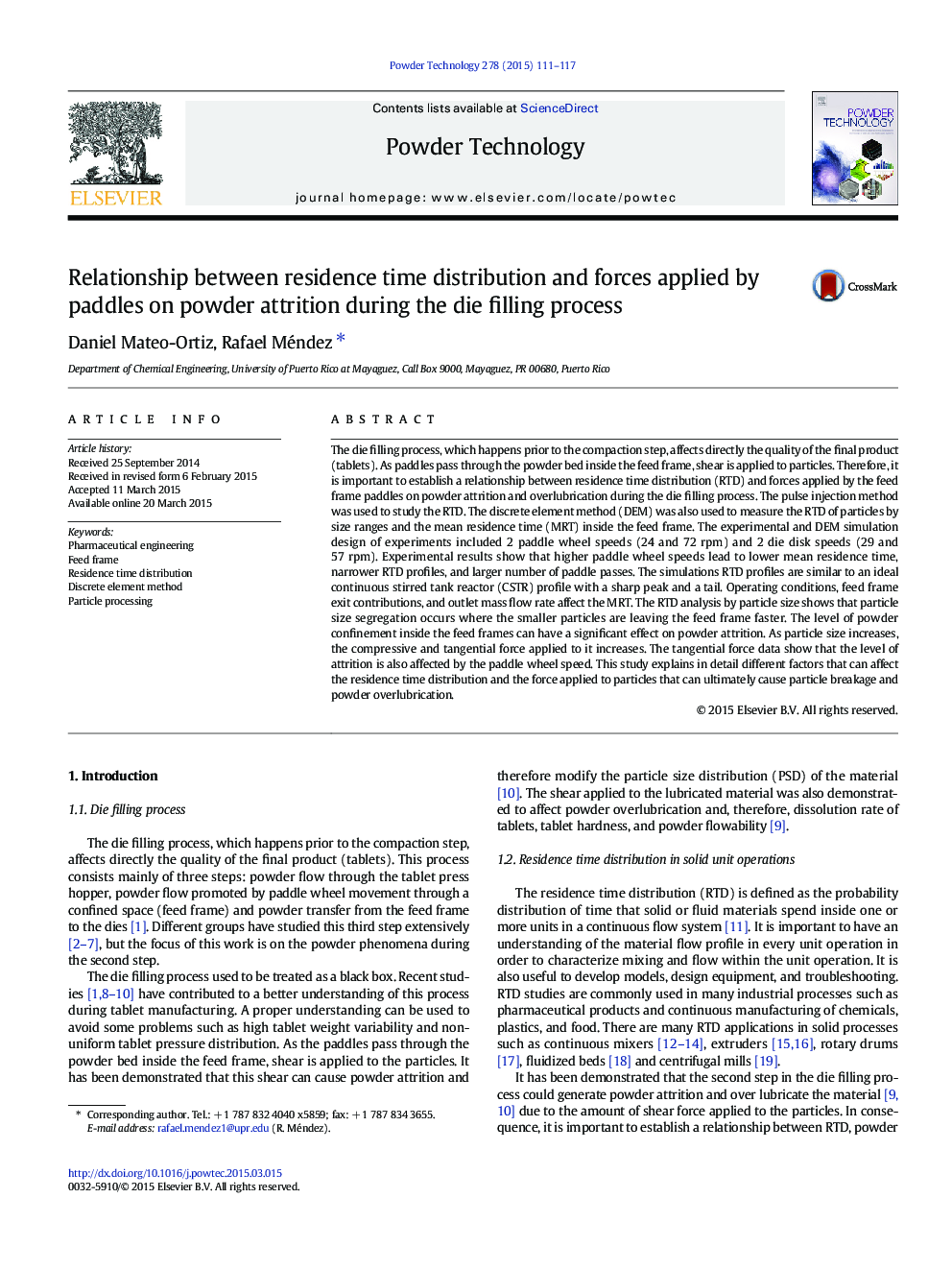| کد مقاله | کد نشریه | سال انتشار | مقاله انگلیسی | نسخه تمام متن |
|---|---|---|---|---|
| 235602 | 465642 | 2015 | 7 صفحه PDF | دانلود رایگان |
• Relationship between RTD and forces applied by paddles on powder attrition was found.
• Experimental results showed that higher paddle wheel speeds lead to lower MRT.
• DEM was used to measure RTD and MRT of particles by size ranges.
• Simulations RTD profiles are similar to an ideal CSTR.
The die filling process, which happens prior to the compaction step, affects directly the quality of the final product (tablets). As paddles pass through the powder bed inside the feed frame, shear is applied to particles. Therefore, it is important to establish a relationship between residence time distribution (RTD) and forces applied by the feed frame paddles on powder attrition and overlubrication during the die filling process. The pulse injection method was used to study the RTD. The discrete element method (DEM) was also used to measure the RTD of particles by size ranges and the mean residence time (MRT) inside the feed frame. The experimental and DEM simulation design of experiments included 2 paddle wheel speeds (24 and 72 rpm) and 2 die disk speeds (29 and 57 rpm). Experimental results show that higher paddle wheel speeds lead to lower mean residence time, narrower RTD profiles, and larger number of paddle passes. The simulations RTD profiles are similar to an ideal continuous stirred tank reactor (CSTR) profile with a sharp peak and a tail. Operating conditions, feed frame exit contributions, and outlet mass flow rate affect the MRT. The RTD analysis by particle size shows that particle size segregation occurs where the smaller particles are leaving the feed frame faster. The level of powder confinement inside the feed frames can have a significant effect on powder attrition. As particle size increases, the compressive and tangential force applied to it increases. The tangential force data show that the level of attrition is also affected by the paddle wheel speed. This study explains in detail different factors that can affect the residence time distribution and the force applied to particles that can ultimately cause particle breakage and powder overlubrication.
Figure optionsDownload as PowerPoint slide
Journal: Powder Technology - Volume 278, July 2015, Pages 111–117
